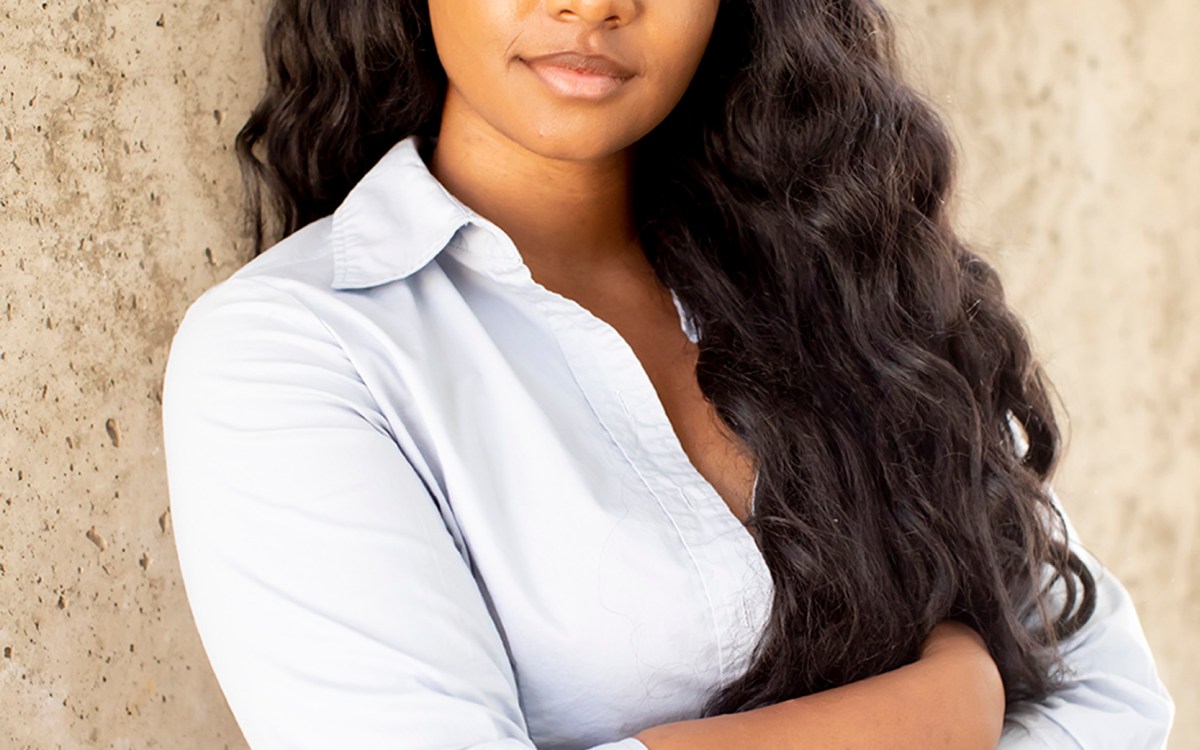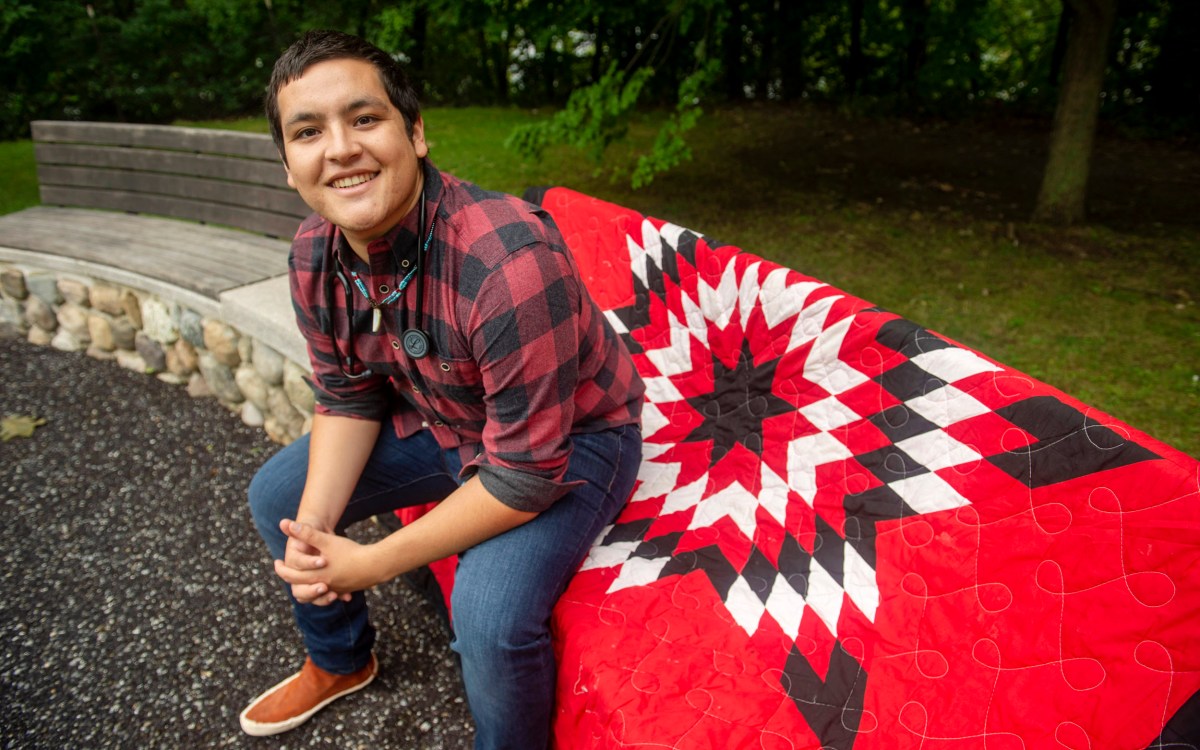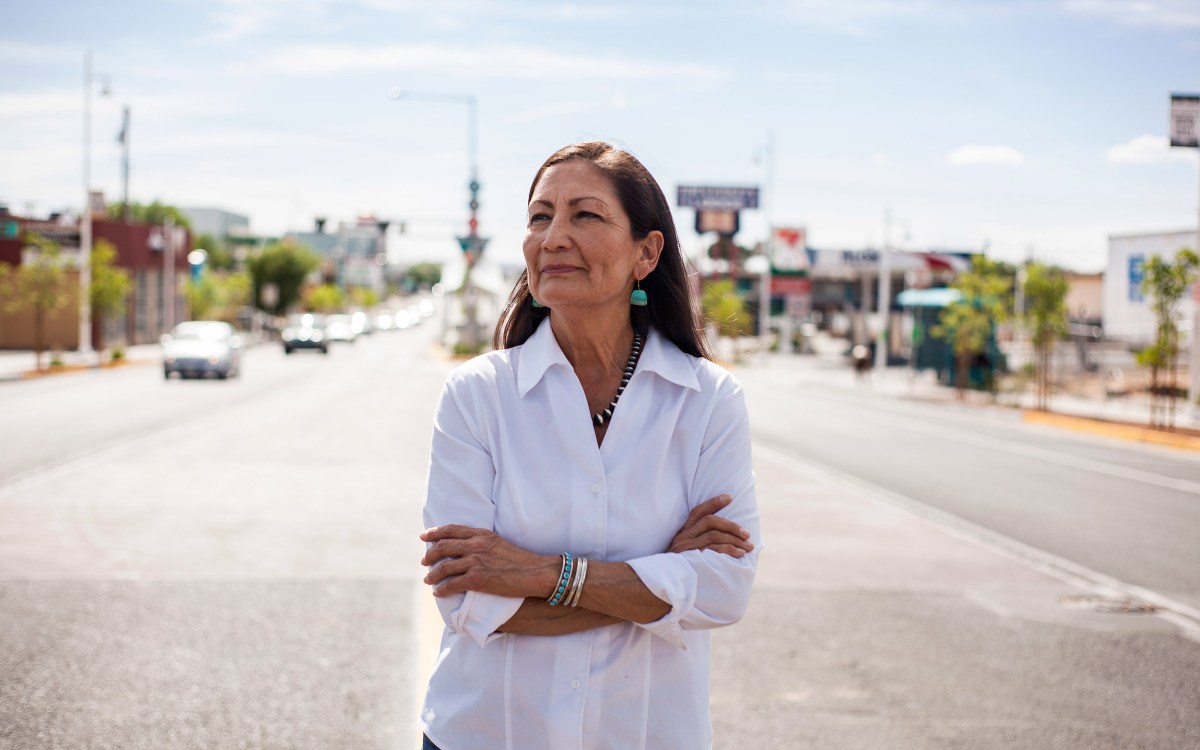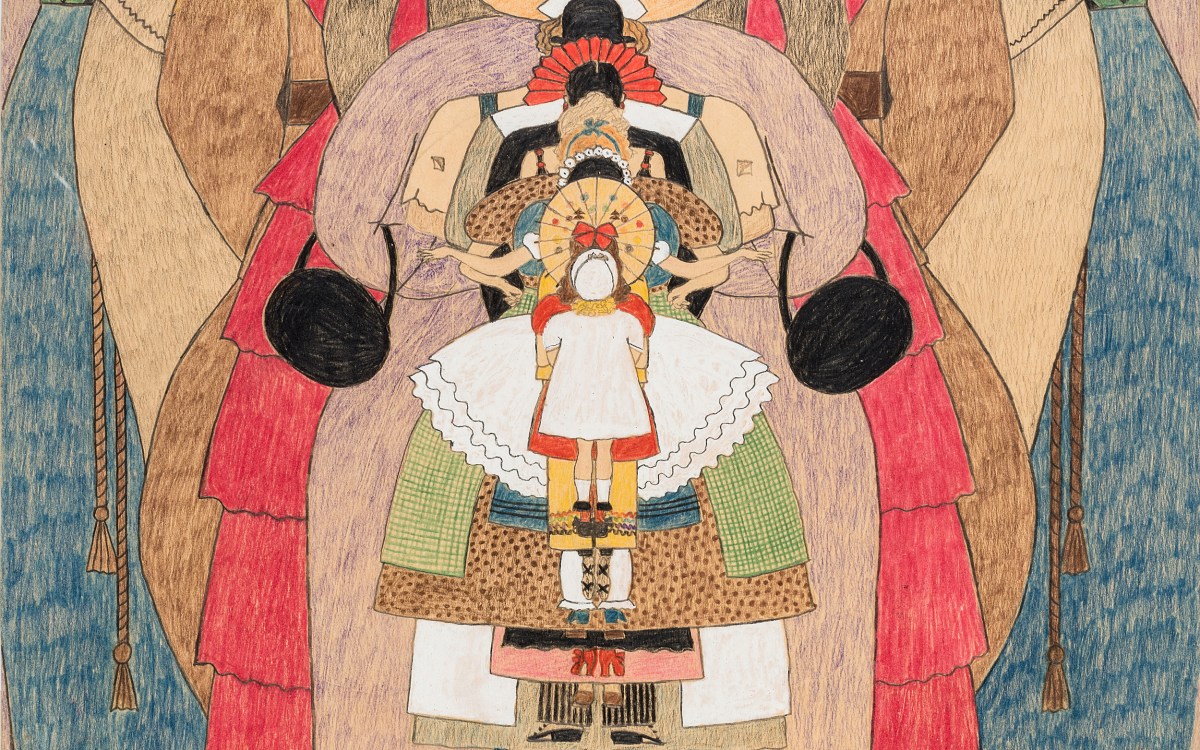Student of history makes history
Inspired by family, Samantha Maltais, first Wampanoag to attend Harvard Law School, plans a future focused on Indigenous rights, environmental justice
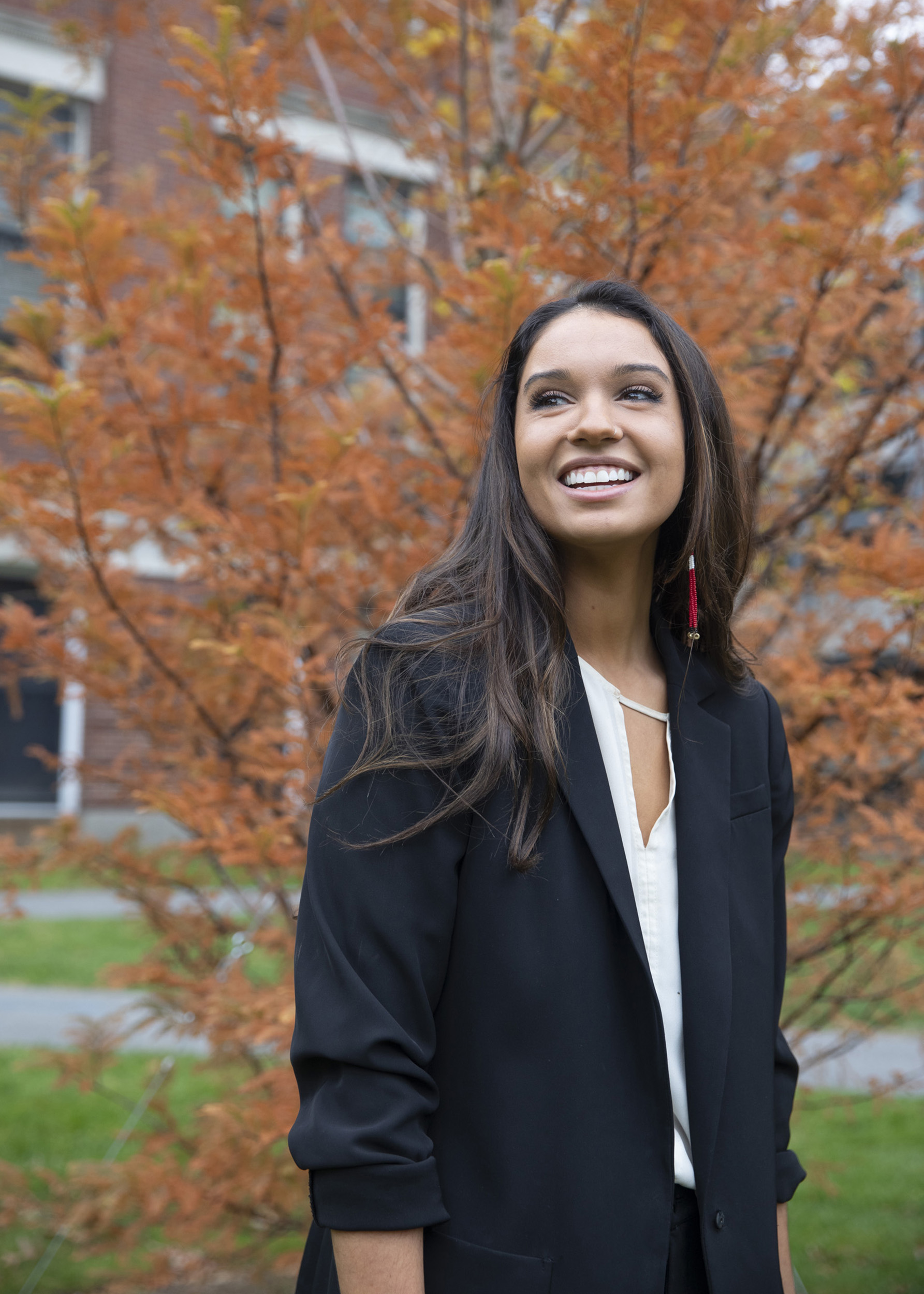
“Harvard’s origin story is inextricably intertwined to the education of Indigenous youth,” said Samantha Maltais, the first member of the Aquinnah Wampanoag tribe to enroll at the Law School.
Kris Snibbe/Harvard Staff Photographer
Growing up in a family dedicated to preserving her Indigenous nation, the Aquinnah Wampanoag tribe, Samantha Maltais received a primer in legal education. Her grandmother helped the tribe gain federal recognition. Her mother is its chairperson. As a young girl, Maltais attended tribal council meetings, consultations with the U.S. Bureau of Indian Affairs, and self-governance workshops.
This fall, she is continuing her education at Harvard Law School.
The significance of Maltais’ arrival at HLS is not lost on her. The Wampanoag tribe has inhabited the island of Noepe — the Wampanoag name for Martha’s Vineyard — for more than 10,000 years, and they still occupy their aboriginal land at Aquinnah (Gay Head) on the southwestern end of the island. Maltais is the first member of her nation to enroll at the Law School.
It was a long time coming, she says.
Harvard’s history is entangled with that of Maltais’ tribe in multiple ways. The Harvard Charter of 1650 stipulated the College’s commitment to “educate the English and Indian youth of this country in knowledge and godliness,” with the intent to “civilize” and assimilate Indigenous students into mainstream European and American cultures and values. The first Native American student at Harvard was Caleb Cheeshahteaumuck, a member of the Wampanoag tribe, who graduated in 1665.
“Looking back, we understand that assimilation was part of the larger process of colonization in what is now known as the United States,” said Maltais. “Now it’s an important time to note that Native students are using education not as a tool of assimilation to strip us of our identities, but instead to uplift and advocate for our own tribal communities. That’s what I intend to do with my law degree and my legal education.”
For Jason Packineau, interim executive director of the Harvard University Native American Program, Maltais’ enrollment at HLS brings “both renewed energy and an opportunity to reflect on Harvard’s obligations to Native American communities.” Packineau is an enrolled citizen of the Three Affiliated Tribes (Mandan, Hidatsa, Arikara) of North Dakota. He is also Pueblo of Jemez and Pueblo of Laguna.
“The significance of having a Wampanoag student at Harvard means the dialogue surrounding the language of the Charter can elevate beyond historical interpretation and instead become a conversation rooted in real relationship-building for tribal communities and Native students,” Packineau said.
“Native students are using education not as a tool of assimilation to strip us of our identities, but instead to uplift and advocate for our own tribal communities.”
Samantha Maltais
Native American students make up a tiny minority at Harvard. Only 1.1 percent of students admitted to the Class of 2025 were Native American. Some progress has been made over the years, but it has been slow-going. In 2011, Tiffany Smalley became the second Wampanoag to graduate from the College, 346 years after Cheeshahteaumuck did it in 1665. In 2018, Harvard hired the historian Philip Deloria as its first tenured Native American professor. There are now three other full-time Native American faculty at Harvard.
Maltais, a Dartmouth College graduate who won a three-year law scholarship from the American Indian College Fund, would like to see the University do more to increase the number of Native American undergraduates, courses in Native American studies, and Native American faculty, both at the College and at the Law School.
“I don’t think there is ever a point where Harvard can do too much for Native students,” said Maltais. “Harvard’s origin story is inextricably intertwined to the education of Indigenous youth.”
As for her post-Law School future, Maltais plans to work at “the intersection of Indigenous rights, tribal sovereignty, and environmental justice.” For her and the 340 tribe members who live on Martha’s Vineyard, climate change is a major concern. Rising sea levels, severe storms, and coastal erosion are causing burial and sacred sites to be washed out to sea, and some of the clay cliffs that were part of the background in Maltais’ childhood have vanished.
“These are just moments of climate reckoning that shaped my understanding of not only environmental justice and the urgent need to combat climate change, but also the need for Indigenous peoples and tribal governments to be able to protect their own homelands,” she said.
Maltais takes pride in having made history for her tribal community, but she is aware of the sacrifices of those who came before her. She hopes to inspire other Native students to follow in her steps, the same way she was inspired by the examples of her mother and grandmother.
Maltais’ grandmother Edith Andrews, who is 93 years old, worked in historical preservation, and often gave talks at Harvard as part of a long relationship with the Peabody Museum of Archaeology & Ethnology. She was thrilled when her granddaughter enrolled at the Law School, said Maltais.
“Harvard was always a place where my mother, grandmother, or members of our community could be invited to educate students,” said Maltais. “But the doors of Harvard were never open to my mother or grandmother as a place to get an education. When I was admitted to Harvard Law School, for my grandmother, it was just a moment of wow.”



